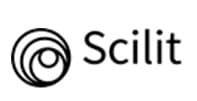Point cloud models with Terrestrial Laser Scanner (TLS) applied to recording built heritage: Workflow implication in results quality
DOI:
https://doi.org/10.5377/arquitectura.v8i15.16230Keywords:
Cloud-Point, documentation, heritage, laser-scanner, modellingAbstract
Points-Cloud are mathematical models which use spatial coordinate (XYZ) that represent the built physical space. In the last decade, point-cloud has been widely applied to built heritage register, because among its benefit this type of registration allows capture a high level of geometric detail, especially when it is performed with Terrestrial Laser Scanner (TLS). However, results can present variations in precision values in function of the process that is taken. The aim of this paper is to analyze the process of building measurement capture with the use of TLS to explain how some parts of the workflow can improve or affect points-cloud models. The results of this study are useful to future projects of TLS registration, due to the fact that it presents the main consideration to be taken into account and thus reduce errors to improve points-cloud models.
Downloads
1146
References
Addison, A. C., & Gaiani, M. (2000). Virtualized Architectural Heritage: New Tools and Techniques. IEEE Multimedia, 7(2), 26-31.
Ahn, J., & Wohn, K. (2016). Interactive scan planning for heritage recording. Multimedia Tools and Applications(75), 3655-3675. doi:10.1007/s11042-015-2473-0
Alshawabkeh, Y., & Haala, N. (2004). Integration of digital photogrammetry and laser scanning for heritage documentation. ISPRS XX. Symposium, Com. V., 12-23. Obtenido de https://www.isprs.org/proceedings/xxxv/congress/comm5/papers/590.pdf
Aryan, A., Bosché, F., & Tang, P. (2021). Planning for terrestrial laser scanning in construction: A review . Automation in Construction (125). doi:10.1016/j.autcon.2021.103551
Barber, D. M., Dallas, R. W., & J Mills, o. P. (2006). Laser Scanning for Architectural Conservation. Journal of Architectural Conservation, 12(1), 35-52. doi:10.1080/13556207.2006.10784959
Bosché, F. (2012). Plane-based registration of construction laser scans with 3D/4D building models. Advanced Engineering Informatics, 26, 90-102. doi:10.1016/j.aei.2011.08.009
Cellucci, C. (2016). Models of Science and Models in Science. En E. Ippoliti, F. Sterpetti, & T. Nickles (Edits.), Models and inferences in science (págs. 95-112). Switzerland: Springer.
Dallas, R. (2003). Measured Surveys of Historic Buildings: User Requirements and Technical Progress. Journal of Architectural Conservation, 9(2), 58-81. doi:10.1080/13556207.2003.10785343
Damięcka-Suchocka, M., Katzer, J., & Suchocki, C. (2022). Application of TLS Technology for Documentation of Brickwork Heritage Buildings and Structures. Coatings, 12(12). doi:10.3390/coatings12121963
Dong, Z., Liang, F., Yang, B., Xu, Y., Zang, Y., Li, J., . . . Stilla, U. (2020). Registration of large-scale terrestrial laser scanner point clouds: A review and benchmark. ISPRS Journal of Photogrammetry and Remote Sensing, 163, 327-342. doi:10.1016/j.isprsjprs.2020.03.013
Eld, M., Mizerák, M., & Trojan, J. (2018). 3d Laser Scanner: History and Applications. Acta Simulatio, 1-5. doi:10.22306/asim.v4i4.54
El-Din Fawzy, H. (2019). 3D laser scanning and close-range photogrammetry for buildings documentation: A hybrid technique towards a better accuracy. Alexandria Engineering Journal, 1191–1204. doi:10.1016/j.aej.2019.10.003
Grussenmeyer, P., Alby, E., Assali, P., Poitevin, V., Hullo, J. F., & & Smigiel, E. (2011). Accurate Documentation in Cultural Heritage by merging TLS and high resolution photogrammetric data. Videometrics, Range Imaging, and Applications XI, 8085, 79-91. doi:10.1117/12.890087
Gu, X., Wang, X., & Guo, Y. (2020). A Review of Research on Point Cloud Registration Methods. IOP Conf. Series: Materials Science and Engineering, 782. doi:10.1088/1757-899X/782/2/022070
Guarnieri, A., Remondino, F., & & Vettore, A. (2006). Digital photogrammetry and TLS data fusion applied to Cultural Heritage 3D modeling. Int. Arch. Photogramm. Remote Sens. Spat. Inf. Sci, 36, 1-6. Obtenido de https://www.isprs.org/proceedings/xxxvi/part5/paper/1216_dresden06.pdf.
ICOMOS. (1990). Guide to Recording Historic Buildings. Butterworth Architecture.
Kwoczyńska, B., Litwin, U., Piech, I., Obirek, P., & Śledź, J. (2016). The Use of Terrestrial Laser Scanning in Surveying Historic Buildings. 2016 Baltic Geodetic Congress . Poland: IEEE. doi:10.1109/BGC.Geomatics.2016.54
Lercari, N. (2016). Terrestrial Laser Scanning in the Age of Sensing. En M. Forte, & S. Campana (Edits.), Digital Methods and Remote Sensing in Archaeology (págs. 3-33). New York: Springer. doi:10.1007/978-3-319-40658-9_1
Mukupa, W., Roberts, G. W., Hancock, C. M., & Al-Manasir, K. (2016). A review of the use of terrestrial laser scanning application for change detection and deformation monitoring of structures. Survey Review. doi:10.1080/00396265.2015.1133039
Pritchard, D., Sperner, J., Hoepner, S., & & Tenschert, R. (2017). Terrestrial laser scanning for heritage conservation: the Cologne Cathedral documentation project. ISPRS Annals of the Photogrammetry, Remote Sensing and Spatial Information Sciences, 4, págs. 213-220. Ottawa, Canada. doi:10.5194/isprs-annals-IV-2-W2-213-2017
Remondino, F. (2011). Heritage Recording and 3D modeling with photogrammetry and 3d scanning. Reomete Sensing, 1104-1138. doi:10.3390/rs3061104
Swallow, P., Dallas, R., Jackson, S., & Watt, D. (2016). Measurement and Recording of Historic Buildings. London: Routledge.
Wu, C., Yuan, Y., Tang, Y., & Tian, B. (2022). Application of Terrestrial Laser Scanning (TLS) in the Architecture, Engineering and Construction (AEC) Industry. Sensors. doi:10.3390/s22010265
Xu, Y., & Stilla, U. (2021). Toward building and civil Infrastructure reconstruction from point clouds: A review on data and key techniques. Journal Of Selected Topics In Applied Earth Observations And Remote Sensing, 2857-2885. doi:10.1109/JSTARS.2021.3060568
Downloads
Published
How to Cite
Issue
Section
License
Copyright (c) 2023 Universidad Nacional de Ingeniería

This work is licensed under a Creative Commons Attribution-NonCommercial-NoDerivatives 4.0 International License.



















